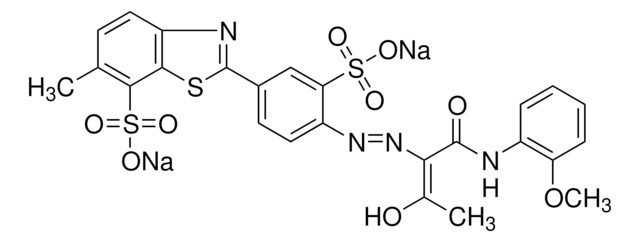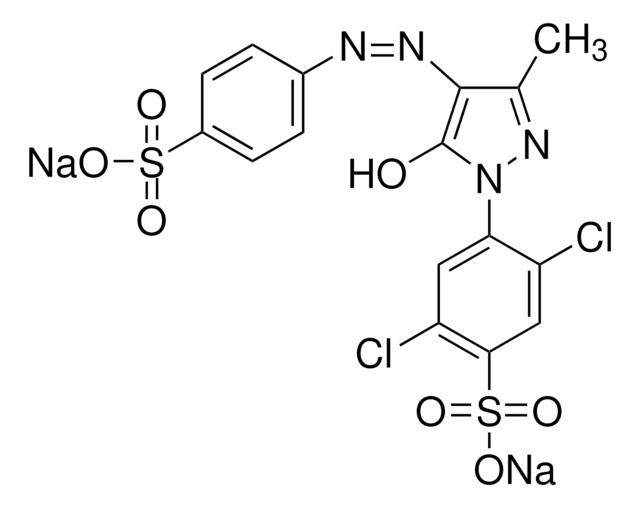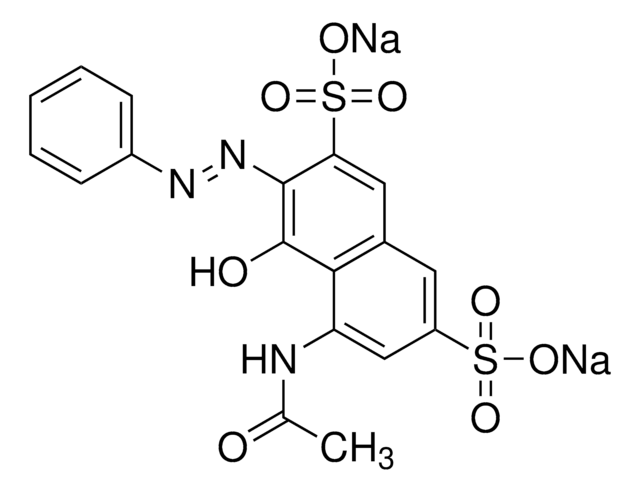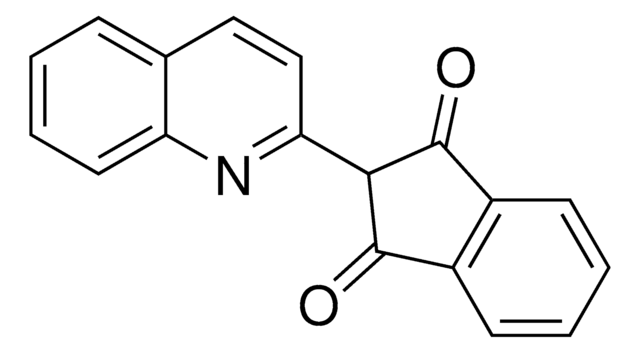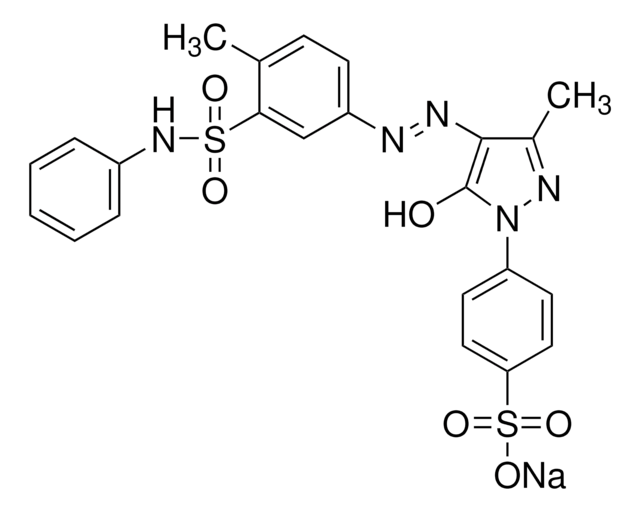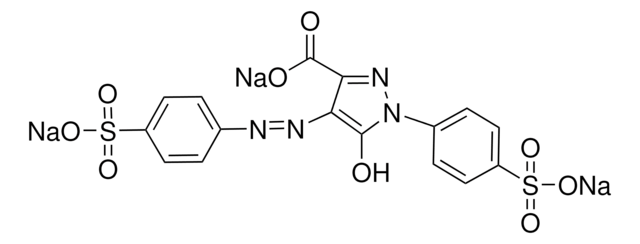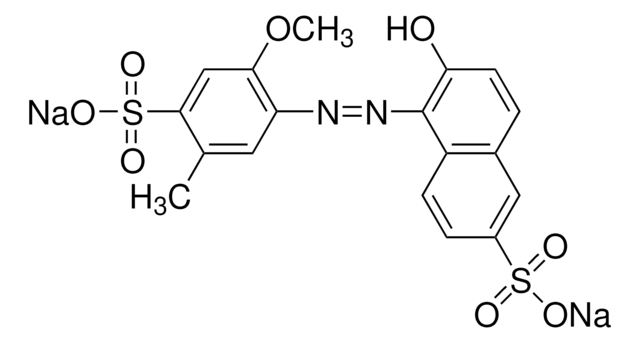201987
Acid Yellow 17
Dye content 60 %
About This Item
Productos recomendados
form
powder
Quality Level
composition
Dye content, 60%
λmax
400 nm
ε (extinction coefficient)
≥8000 at 252-258 nm in water at 0.02 g/L
application(s)
diagnostic assay manufacturing
hematology
histology
storage temp.
room temp
SMILES string
[Na+].[Na+].CC1=NN(C(=O)C1\N=N\c2ccc(cc2)S([O-])(=O)=O)c3cc(Cl)c(cc3Cl)S([O-])(=O)=O
InChI
1S/C16H12Cl2N4O7S2.2Na/c1-8-15(20-19-9-2-4-10(5-3-9)30(24,25)26)16(23)22(21-8)13-6-12(18)14(7-11(13)17)31(27,28)29;;/h2-7,15H,1H3,(H,24,25,26)(H,27,28,29);;/q;2*+1/p-2/b20-19+;;
InChI key
FTZLWXQKVFFWLY-LLIZZRELSA-L
¿Está buscando productos similares? Visita Guía de comparación de productos
General description
Application
Storage Class
11 - Combustible Solids
wgk_germany
WGK 3
flash_point_f
Not applicable
flash_point_c
Not applicable
ppe
Eyeshields, Gloves, type N95 (US)
Elija entre una de las versiones más recientes:
¿Ya tiene este producto?
Encuentre la documentación para los productos que ha comprado recientemente en la Biblioteca de documentos.
Nuestro equipo de científicos tiene experiencia en todas las áreas de investigación: Ciencias de la vida, Ciencia de los materiales, Síntesis química, Cromatografía, Analítica y muchas otras.
Póngase en contacto con el Servicio técnico